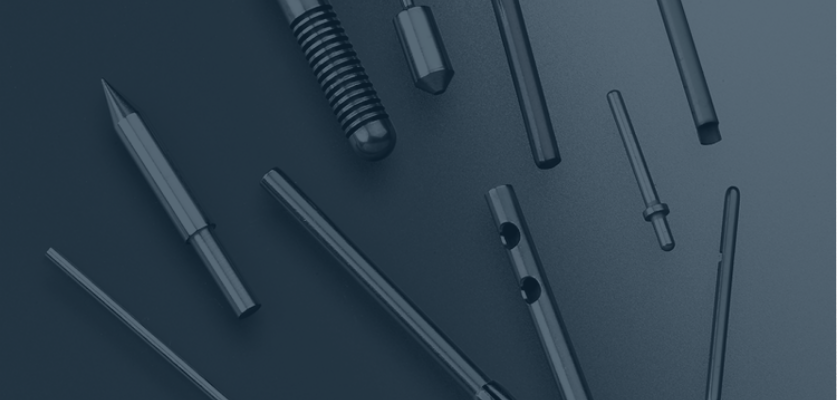What Is Lights Out Small Parts Machining — and How Realistic Is It?
Lights out machining is a method of automating manufacturing to minimize or eliminate the amount of human interaction needed. This idea of replacing humans with a gadget or process that will do the same job faster, better, or cheaper is not a new one.
In recent years, the allure of robotics and automation has continued to grow, including in the field of precision machining. Fully automated lights out production — with its potential for increased productivity, greater throughput, energy savings, and reduced labor costs — is probably the dream of every machine shop owner.
But the reality is a challenge, especially in the world of precise machining. Even with operations that claim to offer fully automated, lights out production, it’s a bit of a fantasy to say any precision machining service is “running by itself” all day and all night.
Criteria for Viable Lights Out Precise Machining
Any lights out manufacturing operation — whether in CNC metal machining or some other production method — needs to have some fundamentals in place to be successful:
- All the machinery, including tools, peripherals, and programming, must work together flawlessly. The equipment must be able to withstand continuous operation, ideally with the ability to self-monitor and either auto-correct or switch off if a problem arises.
- The same goes for the mechanisms used to feed material into the equipment, deliver coolant, remove debris, and offload finished products.
- And contrary to the “no humans required” dream, remote monitoring by a person — again, with the ability to correct minor problems or shut the system down in the event of a major issue — is an added advantage.
Perhaps most importantly, determining whether a machine is capable of continuous lights out operation requires finding out if it delivers the highest level of reliability. The goal is a Cpk of ≥1.67 — that is, the capability for 99.9999% of parts to meet requirements.
That’s (literally) an allowable failure rate of only one in a million.
And even if a machine can handle lights out operation, the accepted benchmark is generally that lights out is only a viable solution if it delivers a return on investment in two years.
Where Lights Out Operation Is Used Today
There are many applications where robotics are a boon, even if only part of the manufacturing process is automated. In everything from beer brewing to packaging, from FedEx hubs to Amazon warehouses to airport baggage handling, automation plays an important role in two circumstances:
- Wherever it offers one in a million reliability
OR
- Where there is the ability to self-correct the process in a manner that is cost effective
Some common examples
Automated packaging operations use built-in go/no go shunting to ensure quality during lights out operation. For instance, a camera can check that the product coming off the line is good, and the machine can shunt aside bad product or shut itself off if a problem occurs.
Robotic resistance spot welding is widely used for continuous operation in the automotive industry. (You can read more about resistance spot welding on our website.) In fact, it’s probably the image people think of the most when they picture robots working on a production line.
However, unlike the manufacture of a cardboard box, this type of operation requires a different level of quality control. After all, you can’t very well shunt aside an entire car because one weld is bad. How do you check that an electrode didn’t fail somewhere on a very long and complex assembly line?
Prime applications for automation
In Japan, FANUC Corporation runs what is widely considered the ultimate in automated, lights out manufacturing. It has robots operating 24×7 in a giant complex of 22 factories to produce other robots for customers such as Tesla Motors and Apple. According to FANUC Robotics America Vice President Gary Zywiol, “Not only is it lights out, we turn off the air conditioning and heat, too.”
Automation is also used in all sorts of processes that are hostile to human beings. This includes manufacturing steps where there are quality or safety issues, as well as where a human being can’t work at the fast pace of a machine, such as the automotive spot welding described above.
So, when the work environment or task is high temperature or high speed or when it involves toxic substances, robotics are a tremendous advantage.
Challenges to Lights Out in CNC High Precision Machining
It’s all very intriguing. But while we are not against lights out machining, we remain appropriately skeptical about its viability in the Swiss machine shop, where continuous unsupervised automation remains a challenge.
Materials used in metal CNC machining
For example, in our world the ability to do lights out machining depends not only on the part geometry, but also on the material being used. Generally, a softer material — one that won’t wear away the tool as quickly as a harder material or won’t create a lot of stringy chips that would wrap around the tool — is a better candidate for lights out tasks.
That means with an appropriate softer material, you can set your machine at 5 pm to run all night, and in the morning, you will return to a basket full of parts that are within tolerance, with none of the tools broken or worn out.
However, a harder material such as stainless steel is not recommended by anyone for lights out CNC precision machining. That’s because such a hard, tough material may quickly wear out or break the tools. Or, you’ll arrive in the morning to a lot of parts that are out of spec, wasting whatever amount of material you loaded into the machine and wreaking havoc on your delivery schedule.
Required tolerances for machining small parts
Tolerances are another important consideration. If you have a tolerance of ±0.005” (0.127 mm) and a trusted material, lights out precision machining is not a problem. But if you have a tolerance of ±0.0005” (0.0127 mm) or under, you’re asking for trouble.
That’s because, depending on the material, the process is going to wear the tool away. If you’re holding an outside diameter (OD) of 0.0002” (0.00508 mm) and run the process unsupervised, in the morning your parts will most likely be out of specification due to tool wear.
Material Dos and Don’ts in Lights Out Machining
Certain materials are naturally more appropriate for lights out CNC metal machining. For instance, brass, 6061 aluminum alloy, and certain plastics that don’t tend to produce long, stringy chips, which can wrap around the tool, might be used.
Even 303 stainless steel might be attempted for lights out machining. However, you’d first have to program the equipment to run for a few hours to test it for holding tolerance and check for tool wear.
Some materials are absolutely not appropriate for lights out production. This includes the darling of the medical device industry, 304 stainless steel, which is tough to machine, produces stringy chips, and throws burrs. Additionally, 316, 17-4, and most other stainless steels are hard to machine and can damage your tools.
The super alloys cannot be machined lights out, and titanium should never, EVER be left unattended. (We’ve seen videos of a machine catching fire from sparks given off by titanium parts — something that was pretty cool but is definitely not recommended!)
Other Stumbling Blocks in the Dark
For high precision machining thousands and thousands of parts, Metal Cutting’s array of up-to-date CNC Swiss screw machines could support lights out production, in that we can load the bar feeder and set the machine to run automatically. Depending on the diameter, we can load up to twelve bars at 0.630″ (16 mm) diameter; with the smallest standard starting stock diameters of 0.090” (2.25 mm), we can load even more.
Monitoring required
However, the nature of CNC precision machining is that during a normal eight-hour shift, you still need someone standing by to monitor the loading and make sure everything is running correctly. So, even in precision machine shops that say they run lights out, you can be pretty sure someone is there to make sure nothing goes wrong.
Bar loading issues
Machining precision metal components also poses challenges in automatic bar loading. First, you must always consider the diameter tolerance on the material you will be machining. In addition, just because you have a bar loader doesn’t mean it is going to load material correctly, and there is a learning curve on virtually every project undertaken.
For instance, when you are working with smaller diameter parts, if the machine is not set perfectly it may try to load two bars of material at once, with very bad results.
Keeping the tool clean
Another requirement is the lights out process must include high-pressure air or some other high-quality method to keep the work area free of chips so that they don’t recut and dull the tool. You also need to think about how to offload finished parts, taking into consideration how delicate those parts may be, to ensure they aren’t damaged post-machining.
Reliability of Lights Out in High Precision Machining
Don’t get us wrong — we’re not saying that lights out production is an impossibility in CNC precision machining. But it does require bringing together and getting input from all stakeholders and providers at the planning stage, to make sure you have:
- The perfect material
- The appropriate part sizing and geometry
- Cpk ≥1.67 on the equipment
- Tolerances that are not so tight that 99.9999% process reliability is not feasible
Even the most precise machining would be hard pressed to deliver one in a million reliability across the tool, bar loader, coolant delivery, and tight tolerances. But if all those conditions ARE met, lights out production can be figured out.
For example, here at Metal Cutting, we might test which machine, tool, and material will achieve the specified results in a lights out process. Or we might test a semi-lights out process, where we program a machine to produce extra parts, not in continuous overnight operation, but in an extra half-shift after hours.
The ROI Issue in Precision Machining
For manufacturers that make the same product over and over again, realizing a return on investment within the two-year benchmark for lights out production is feasible. However, CNC precision machining is largely about manufacturing many different parts in a shorter term.
That means for many precision machine shops, there is simply no time to test if their operations can be run lights out. In addition, two years is a long time for these shops to wait to see ROI, making lights out machining cost prohibitive…
Here at Metal Cutting, every day we’re typically quoting new machine shop projects requiring anywhere from 200 to 20,000 pieces. While we do have jobs that run over years, we don’t often have projects that run continuously for two years. So, it is rare for all the planets to align and for us to have the time to explore the options for lights out production.
In the end, tight tolerance machining has so many variables that it cannot guarantee one in a million reliability, so it is not yet suitable for full-on lights out production. Still, whatever challenges your project may involve, automation technology will surely continue to play a growing role in small part production.
In the meantime, for tips on how to create the best specifications for your small parts, download our free guide, How to Fine-Tune Your Quote Request to Your Maximum Advantage: Frequently Asked Questions in Small Parts Sourcing.






